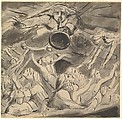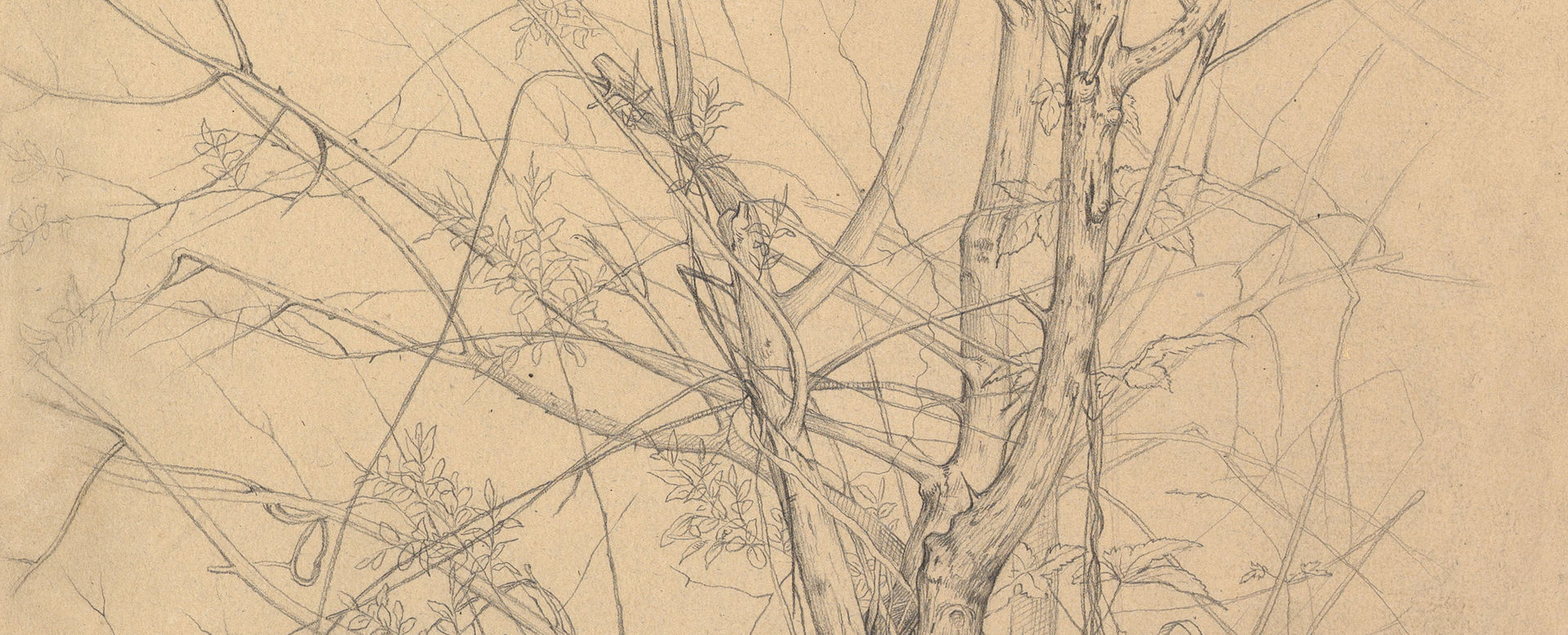The Last Trumpet (recto); Two studies of a right eye, a profile of an open-mouthed young man, the head of an eagle, and the head of a lion (verso)
William Blake British
Not on view
In this dynamic working drawing Blake, Britain's great early Romantic poet/artist, presents the resurrection of believing souls at the last day. The image echoes lines from Saint Paul’s First Letter to the Thessalonians (4:15–17): "For the Lord Himself shall descend from heaven with a shout, with the voice of the archangel, and with the trump of God, and the dead in Christ shall rise first." Blake imaginatively combined all three divine agents. Initially he sketched the central trumpet-blowing figure from the side, then scraped the form away and redrew it. In its final conception the trumpeter’s thrusting instrument puts the viewer in the position of a rising soul. In the 1780s and 1790s Blake typically worked out ideas for multifigural compositions in monochrome drawings such as this, using a pen to define forms and brushed wash for the shadows.
Due to rights restrictions, this image cannot be enlarged, viewed at full screen, or downloaded.




